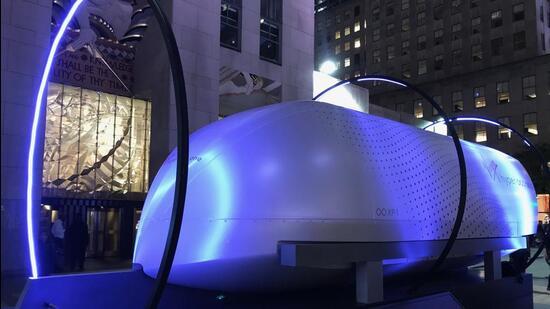It began in 2013. While that wasn’t the case as often back then, Elon Musk still had an undeniable penchant for penning futuristic (often fantasy) theories as the future of humanity. The idea of a vacuum-powered, ultra-fast transportation system which he had suggested then, and taken seriously by fellow billionaire Sir Richard Branson, has faltered for now. American start-up Hyperloop One, announced it is shutting down, formally by the end of the year.

It doesn’t stop a bunch of much smaller start-ups from continuing to find a way, but Hyperloop One’s decision indicates the idea may not be as brilliant as everyone once thought it was. Nevertheless, it is an idea that had excited engineers and investors alike, so much so that Hyperloop One raised around $450 million since 2014, according to estimates. The tech start-up began the journey as Hyperloop Technologies, and then took the name Virgin Hyperloop in 2017, after Virgin’s investment.
The Virgin name was dropped last year, after the company shifted focus in developing this rapid transport system geared towards cargo, rather than people. There were some layoffs at the time. Was that the first sign of trouble, that a hyperloop system between cities and even countries, was never meant to transport humans? There were also initial plans to build a freight link between continental Europe, and China.
Though never involved with Hyperloop at any point in its start-up journey from the beginning to an end in a proverbial ball of fire, it was Musk’s concept that got everyone interested. His theory was that passengers or cargo could be filled in what would essentially be aerodynamic aluminium capsules through massive tubes, at speeds around 750 mph (or around 1207 km/h).
“Hyperloop consists of a low pressure tube with capsules that are transported at both low and high speeds throughout the length of the tube. The capsules are supported on a cushion of air, featuring pressurized air and aerodynamic lift,” Musk had written
“The capsules are accelerated via a magnetic linear accelerator affixed at various stations on the low pressure tube with rotors contained in each capsule. Passengers may enter and exit Hyperloop at stations located either at the ends of the tube, or branches along the tube length,” he’d further theorised, in his paper.
His brilliant mind could see this technology transport passengers and cargo between the US cities of Los Angeles and San Francisco in around 35 minutes, up from an average of 2 hours and 38 minutes, then.
Hyperloop One’s test track in Nevada saw its only test featuring humans in 2020, when the capsule reached a maximum speed of 100 mph – much below its promise of pace. As was the case with the promise of having this technology deployed in the real-world. Initial estimates to have hyperloops in place for commercial use in different parts of the world by 2020, was pushed to 2021. Here we are now, ushering in 2024.
When you’re talking about the pods going at 6, 7, 800 miles an hour, both with people and cargo, that’s tremendously exciting,” Branson had said in an interview in 2017, calling it “ridiculously exciting”. At that time, he’d promised hyperloops were just three years away from actual reality.
Along the way, hyperloop as a technology had been criticised for simply being too expensive to make, install and run. “Laying optic fiber is not really pricey,” said Genevieve Giuliano, a transportation professor at the University of Southern California, speaking with MIT Technology Review, in 2017. “Laying Hyperloop tube is going to be pricey,” she added.
Either Musk had an unworkable, utopian idea. Or everyone simply went about developing it entirely the wrong way.
But think about it. Musk’s own hyperloop test tunnel near the SpaceX headquarters in Hawthorne, California, was dismantled last year and replaced by parking spots for SpaceX employees. The latter a noble idea. Broadly speaking, also indicative Musk himself no longer believes his 2013 theory is workable?
You may wonder about his The Boring Company that’s also digging underground passage tunnels in Las Vegas (they got approvals earlier this year) – but those aren’t in any way related to hyperloops. They’re all to do with his other idea of shifting over ground traffic to the underground, which will see Tesla users drive their Tesla’ inside a tube not much wider than the car itself, but unlike a train, go straight to their destination.
“Teslas in Tunnels”, they describe it. Apprehension about grandiose, utopian transport is all but justified at this point. Perhaps, the future isn’t as different from the present. Perhaps it is full of “soul destroying traffic” (Elon, and The Boring Company’s words). Free speech on a town square, perhaps easier to shape.